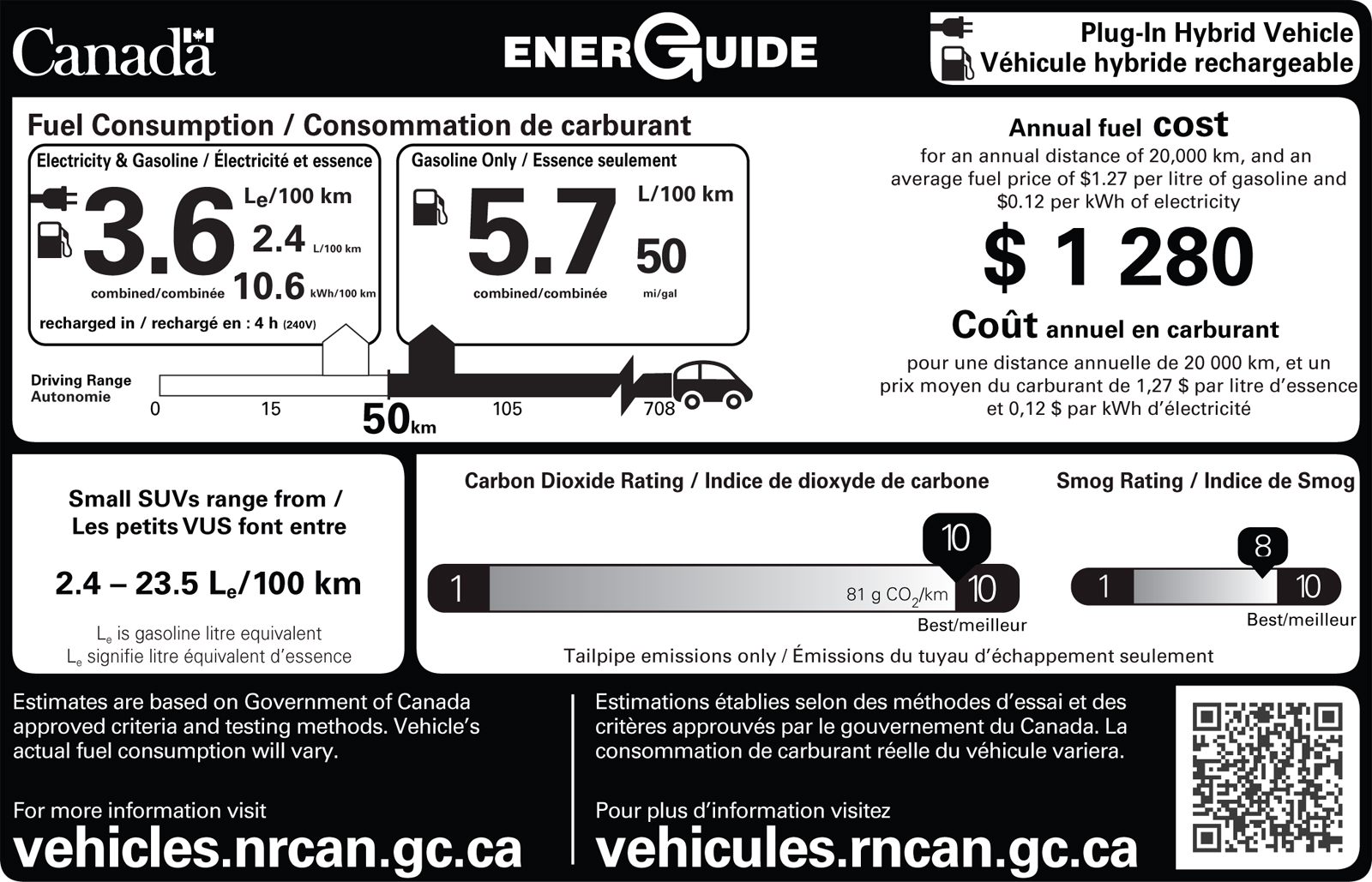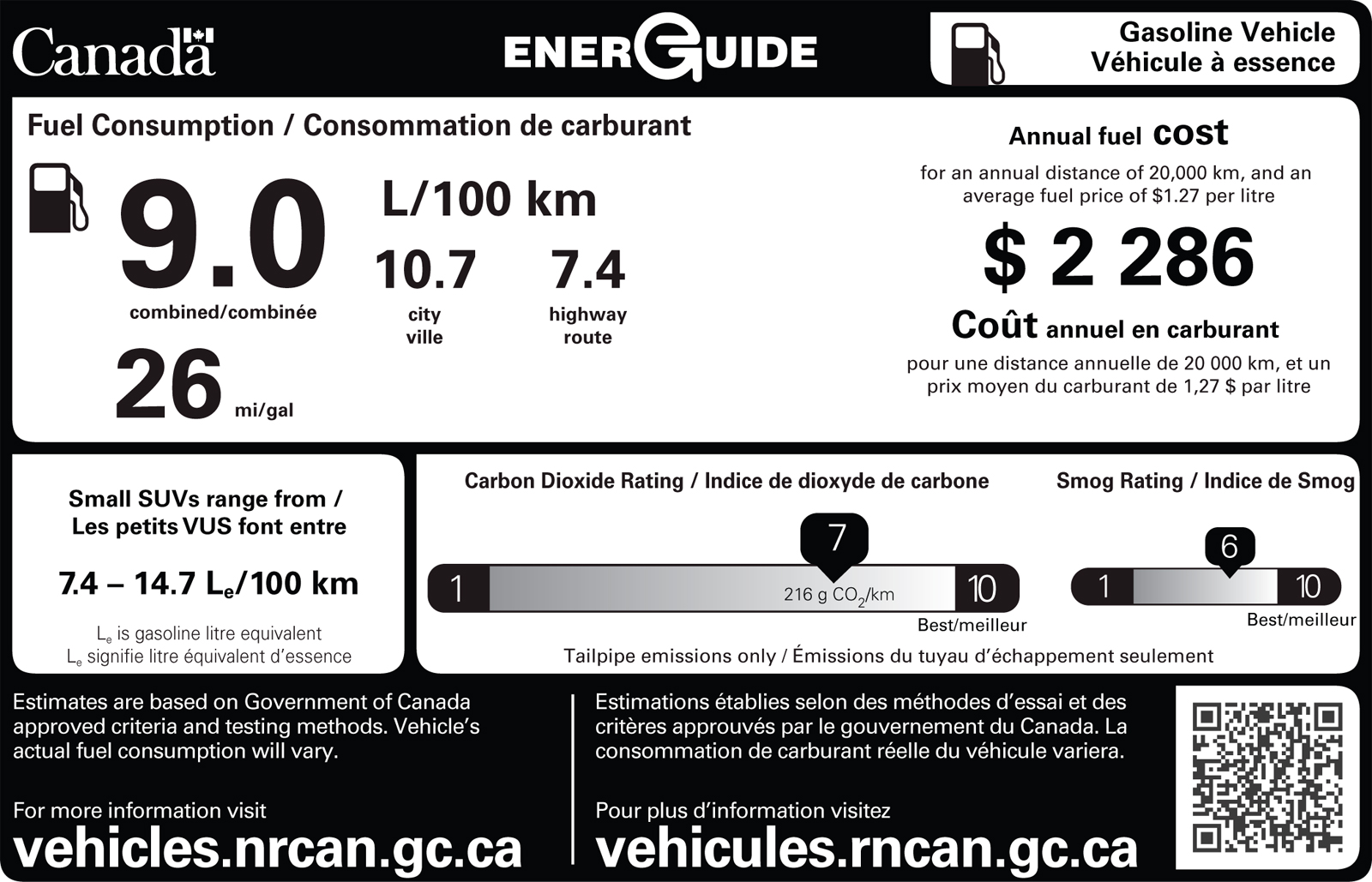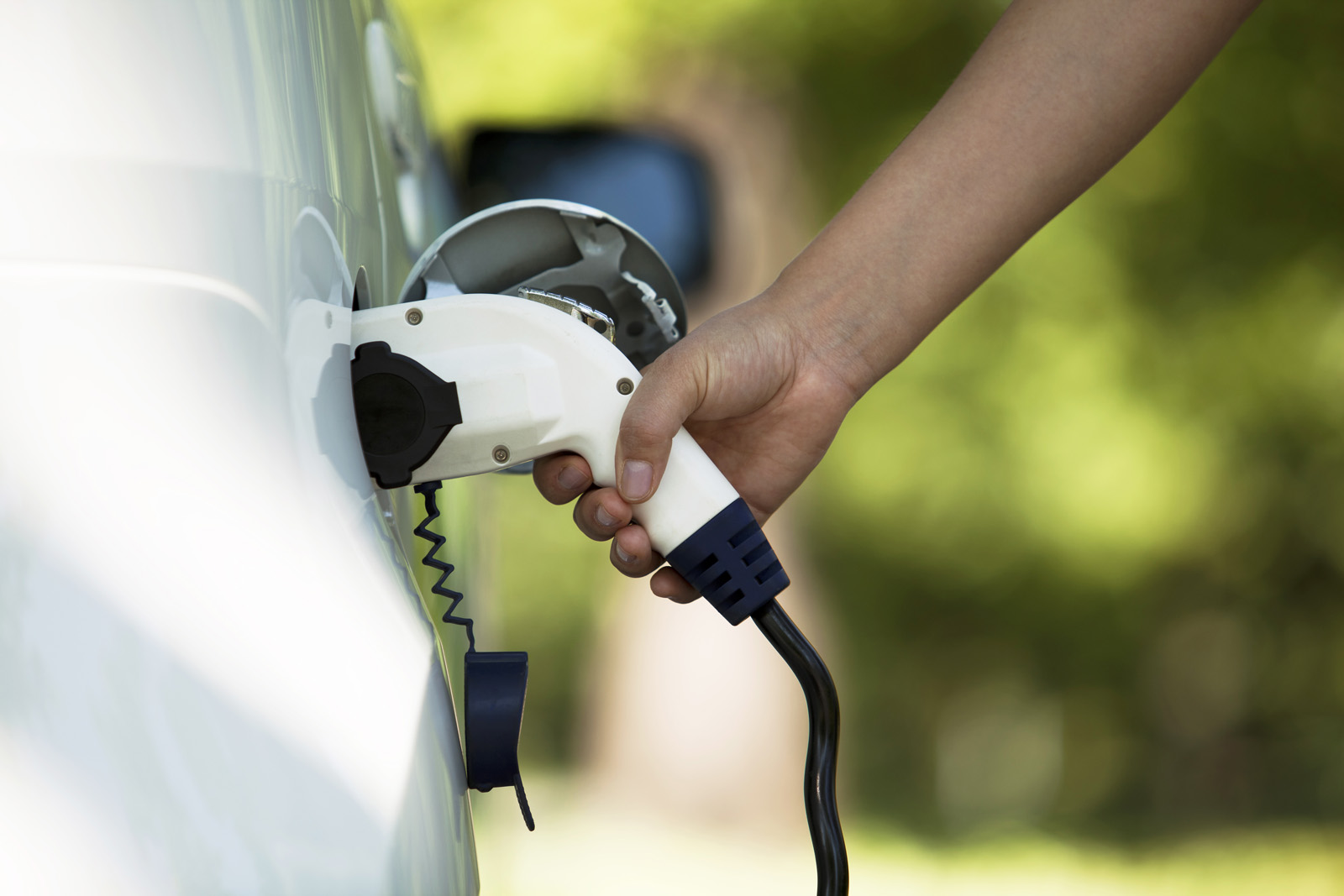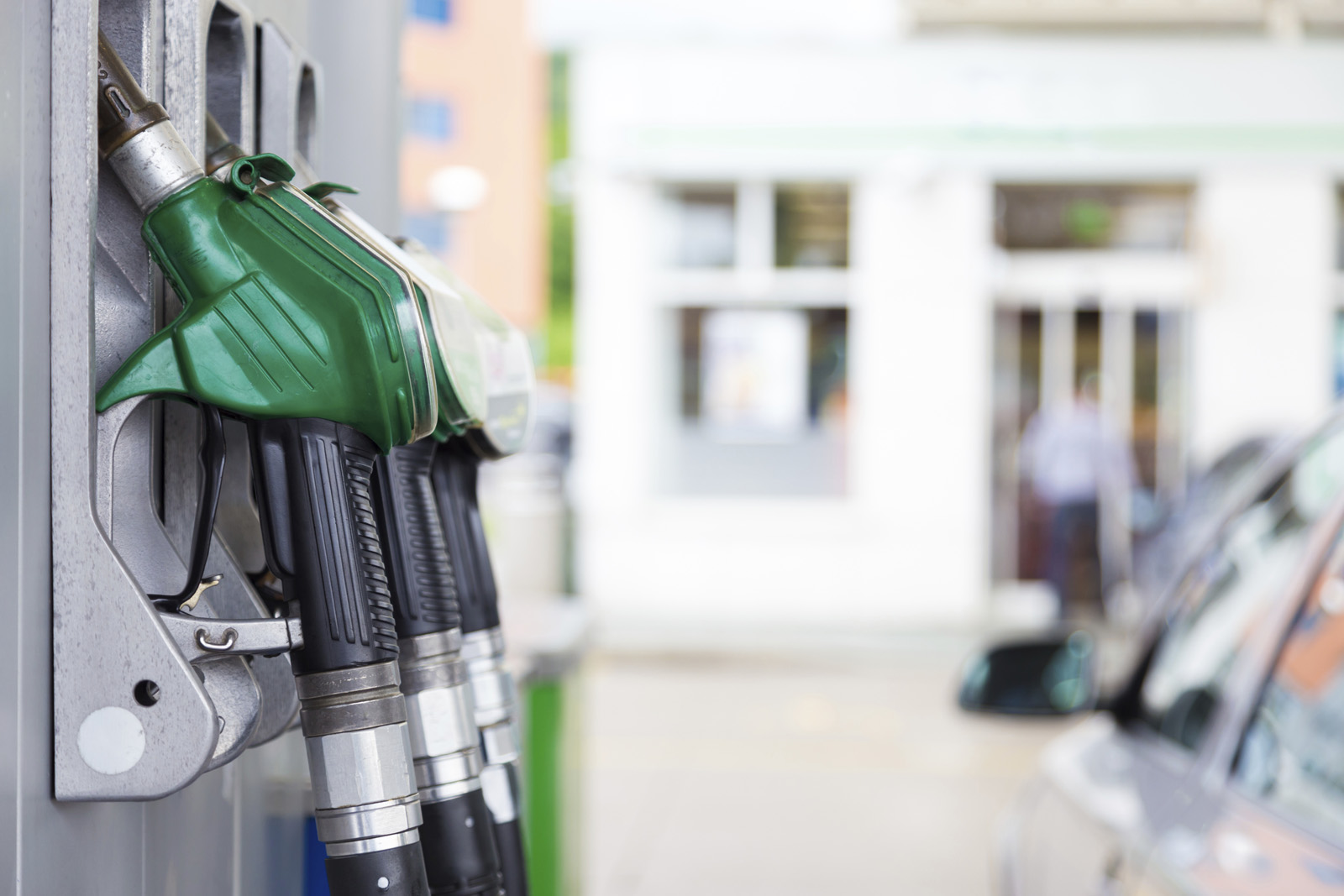Expanded 2016 EnerGuide Label Highlights More Reliable Canadian Fuel Efficiency Numbers, Finally!
If you happened to have been shopping for a new vehicle at any point in 2015, you may have noticed something strange: all new 2015 vehicles had apparently gotten much thirstier – up to 20 per cent thirstier – compared to the mechanically identical 2014 model sitting next to it in the showroom, according to the official government of Canada EnerGuide label prominently displayed on each car.
Wait, what? How could this be? In truth, any vehicle unchanged by the manufacturer for the 2015 model year used exactly the same amount of fuel as before; the difference was in the way the government of Canada officially collected fuel consumption data from automakers, measured some of them independently, and reported those figures. In a nutshell, Canada finally moved away from the outdated two-cycle system it had been using for collecting mileage data, and switched to the more realistic five-cycle system that the U.S. government had started using in 2008 after consumer complaints that real-world fuel consumption was much higher than the government-reported figures.
For 2016, the big news on the fuel efficiency front is that the Canadian government has come up with updated and more detailed EnerGuide labels, which must be prominently displayed on all new vehicles for sale in Canada. These use the more accurate five-cycle fuel consumption measurement not only to make more reliable predictions as to how much fuel new vehicles will use, but will now also show how this more info compares to others in its vehicle segment. For the first time, the labels will also add new environmental ratings for carbon dioxide (CO2), the main planet-hurting greenhouse gas, as well as a smog rating, which measures how it compares to other new vehicles in terms of health-harming pollution emissions.


The Canadian government has added three new test parameters to its traditional city and highway tests: a cold temperature test, one using air conditioning, and a quick-acceleration/high-speed driving test that maxes out at 129 km/h, compared to the previous highway rating’s 97 km/h top speed.
It really is remarkable: the highway fuel efficiency rating on all gas vehicle labels prior to the start of 2014 judged highway fuel efficiency at what on most speedometers would appear closest to 95 km/h.
Another goal of the new labels is to better highlight the advantages and potential disadvantages of a new generation of green vehicles, be they hybrids, plug-in hybrids, no-gas-whatsoever battery electric vehicles like the Tesla Model S, or now fuel cell electric vehicles. All of these vehicles have increasingly advanced fuel efficiency numbers, along with potential major fuel cost savings (yes, even now with lower gas prices) and environmental advantages. On plug-in vehicles, it lists how far the vehicle can travel only using electricity (or AER for all-electric driving range), its total range including gasoline, as well as its different mileage ratings when using electricity.
Plus, from a consumer perspective, the new labels and the more accurate rating system behind them also help keep manufacturer claims in check, especially when it comes to available electric range in plug-in vehicles, as well as fuel efficiency claims made for marketing purposes.
This is not to say that even with more detailed five-cycle tests, companies will not try to gain competitive advantages in their fuel efficiency and related emissions testing, which traditionally in North America are performed by the automakers, with government spot checks to verify their accuracy. The most obvious and egregious recently has been the ongoing Volkswagen Group diesel saga, in which their TDI vehicles were found to conform to emissions regulations when tested in a lab, but electronically bypassed those emissions controls when out on the road, spewing from 10 to 40 times the health-harming nitrogen oxides as allowed by law into the air, both in Canada and the U.S.
As of this writing, this has resulted in all V6 diesel versions of 2014 to 2016 Volkswagen, Audi, and Porsche vehicles to be pulled from the new car market in North America, while all four-cylinder VW diesels from 2009 to 2016 were also affected, including in the last generation Audi A3 TDI. In early January, the U.S. the Department of Justice announced it is suing VW AG and its associated North American operations on behalf of the EPA, with various state attorney-generals publicly stating that VW executives were citing German privacy laws and holding up investigations into the matter.
“Diesel-gate” is clearly an ongoing issue that will continue well into 2016, and possibly beyond. But interestingly, it’s pollutants like nitrous oxides that NRCan’s new smog rating is meant to identify and highlight. Long-term exposure to such particulate emissions found in diesel exhaust have been linked to increased heart, lung and respiratory problems, including lung cancer, by the World Health Organization.

More commonly, automakers have tried to legally “massage” the five-cycle fuel consumption numbers to make their smaller or hybrid vehicles more appealing to buyers. Ford, Hyundai and Kia all had to restate their fuel economy figures for various models. Ford restated its fuel consumption figures for six models in June 2014 (’14 Fiesta 1.6 and 1.0, plus the ’13 and ’14 C-Max Hybrid and plug-in Energi, Fusion Hybrid and Energi, plus the Lincoln MKZ Hybrid), acknowledging their widely advertised figures for these models were too low. It was the second downward revision for the C-Max Hybrid, as Ford first restated its consumption numbers in 2013.
Ford originally argued back then that the numbers weren’t a mistake, but that the EPA rules allowed it to use numbers generated from fuel efficiency testing with the Ford Fusion Hybrid under the EPA’s ‘general label’ rule for vehicles with similar drivetrains and weights. Still, the company “voluntarily” restated the numbers, and provided refunds to owners in varying amounts to cover their unexpected fuel costs.
At the time, with Canada still using the more optimistic (some would say unrealistic) two-cycle figures, the fuel economy numbers Ford advertised here and on its official government fuel consumption labels were even more inflated than the miles per gallon figure advertised in the U.S., when translated into litres per 100 km. Ford later admitted errors in its testing regimen had been made, and once more revised some figures upwards again, paying out more money to those owners.
So, the adoption, finally, of the five-cycle tests for 2015 in Canada was truly a significant step in communicating more accurate fuel consumption figures. It’s true that U.S. regulators have already announced that they are looking into revising and perhaps tightening some of the criteria used for all vehicle emissions and fuel consumption tests in light of the Volkswagen and mileage restatements, which may mean more changes to come.
But for 2016, with a scannable QR code as well as more exhaustive environmental and cost information for all types of advanced vehicles, that EnerGuide label appearing on 2016 models now is much more than just the city/highway mileage numbers and annual fuel cost estimate it offered up before. Those new five-cycle tests should mean that the annual fuel cost estimate provided will also be closer to reality than ever, which is one of the main reasons we elected to include it for all vehicle listings in our guide this year.



























